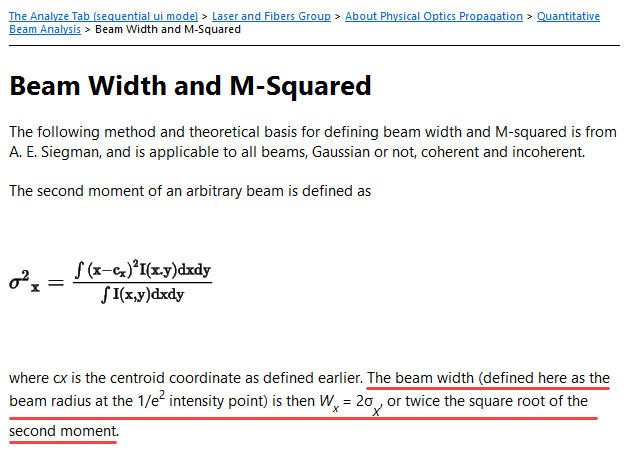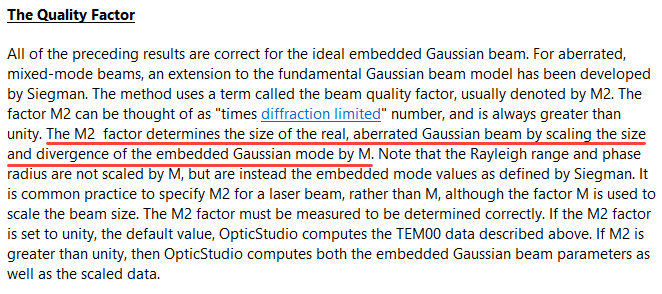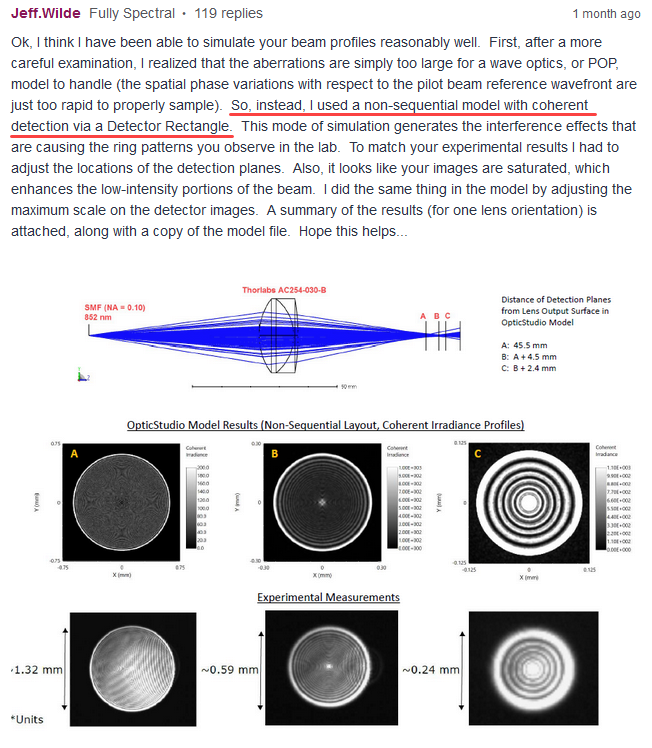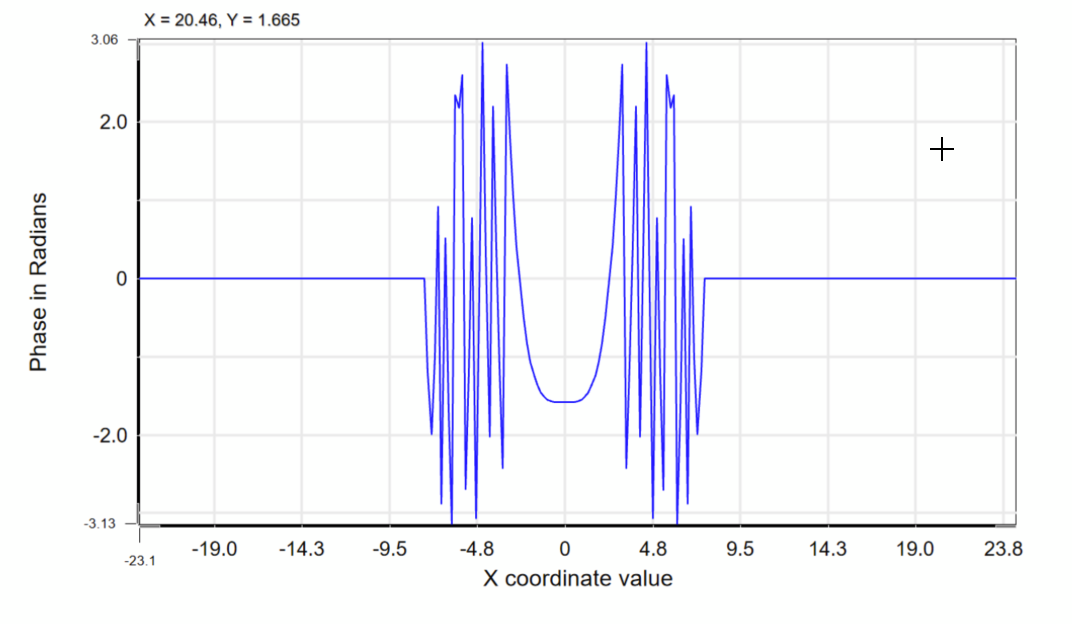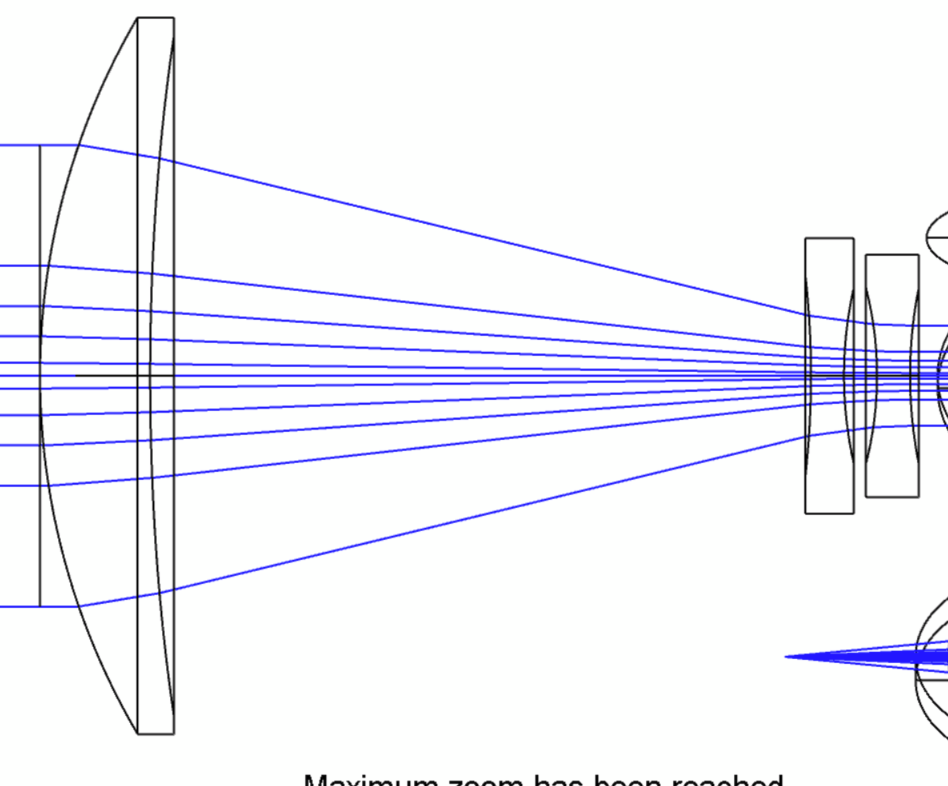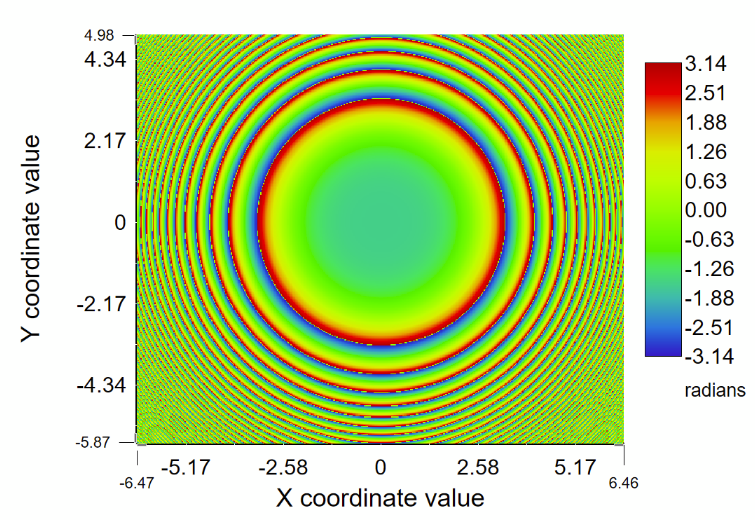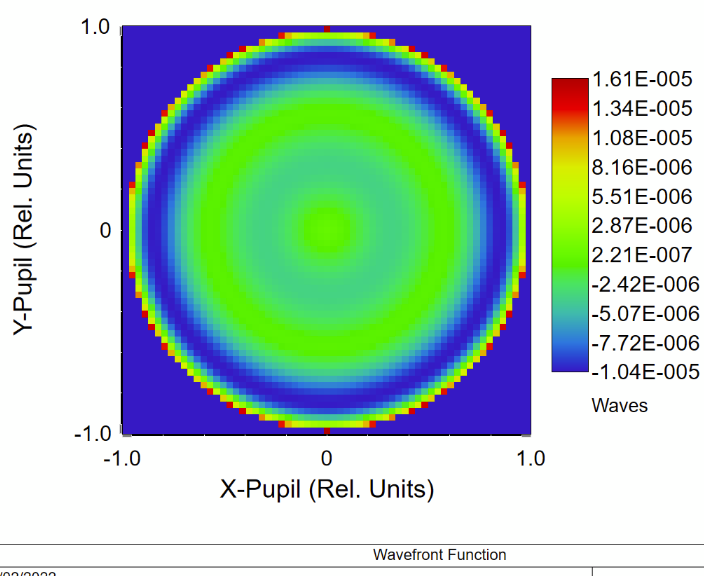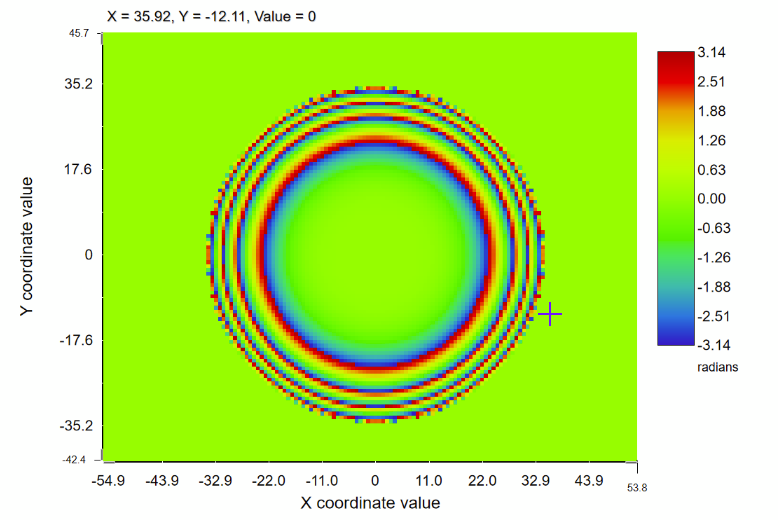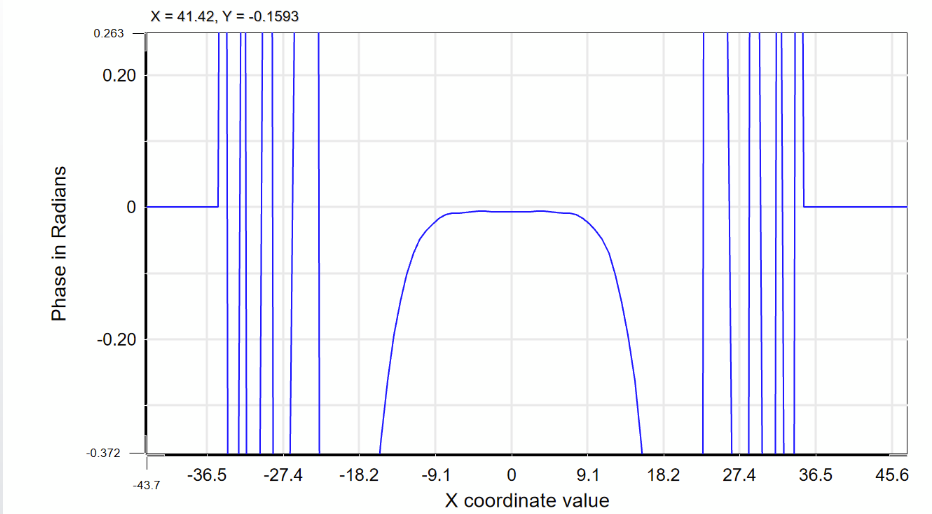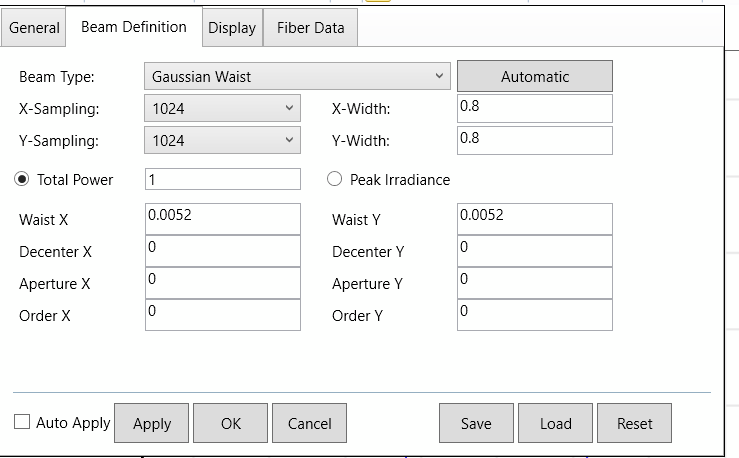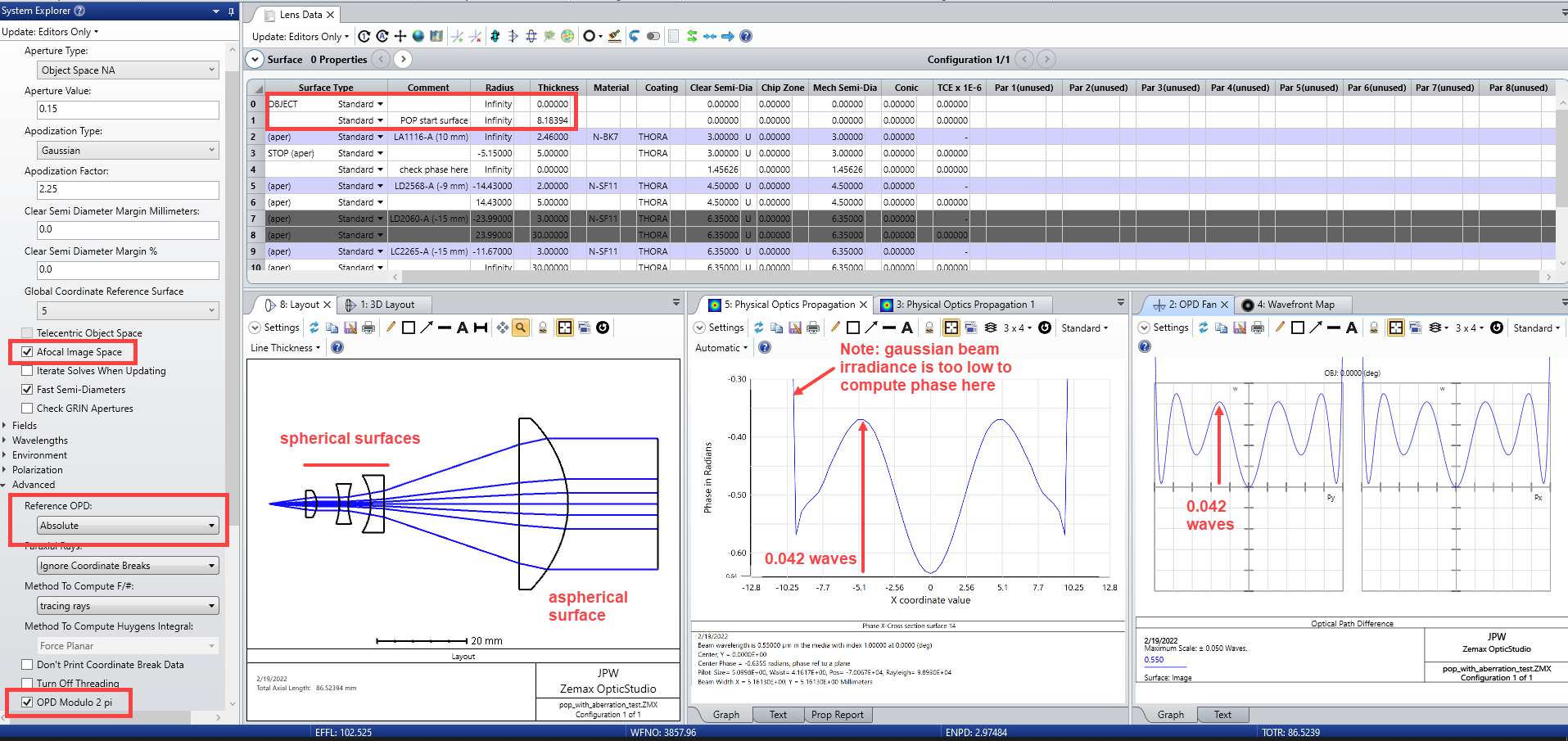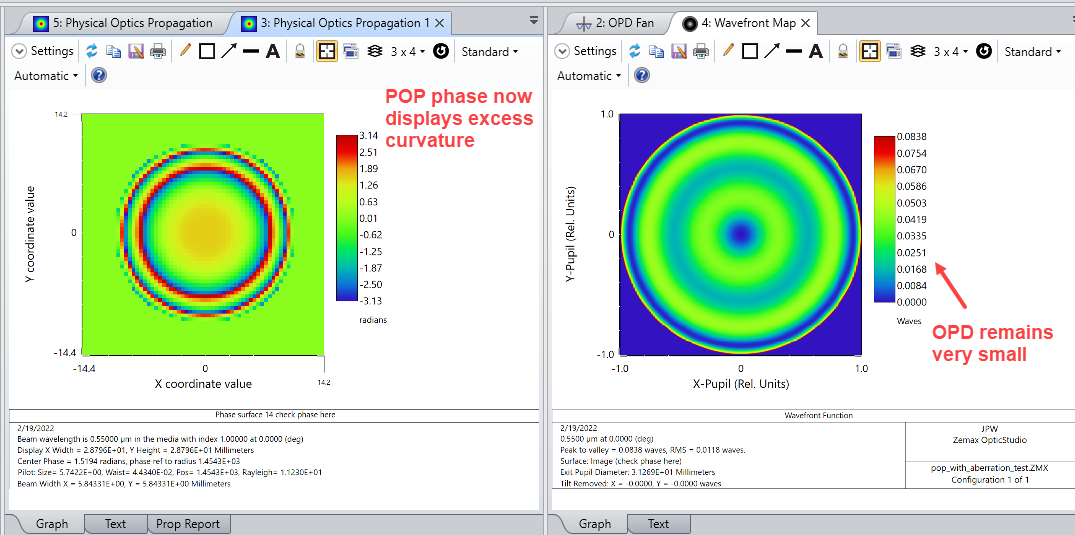Dear Experts,
I have collimated a single-mode fiber (mode field radius 5.2um) output with a collimating lens and a beam expanding telescope. I propagate the beam over a long distance.
To check the collimation (and later do some tolerancing analysis) I have used a Paraxial Gaussian Beam Analysis:
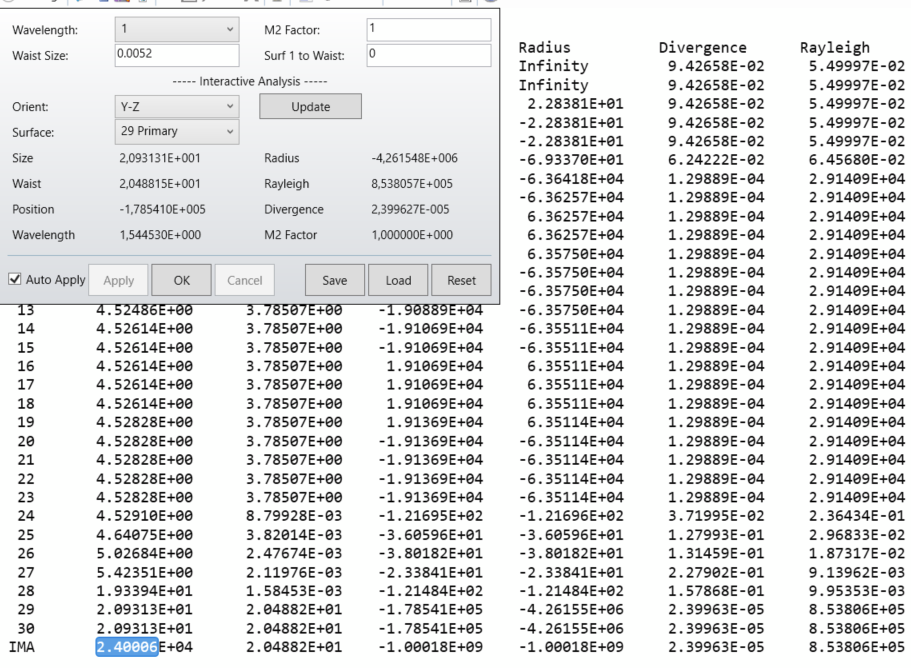
Surface 29 is the output of the telescope. I have a divergence of 23.99urad and a beam size (radius assuming 1/e²) of 20.931mm. Propagation distance is 1e9mm, which gives me the 24m (my paper calculation) in agreement with the IMA beam size (radius). So far as expected.
Now I do a POP propagation:
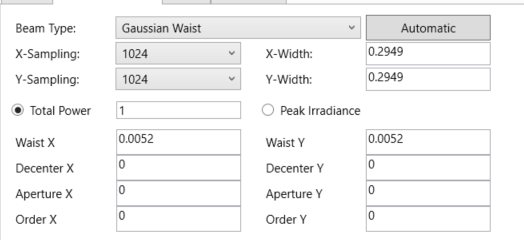
Beam irradiance at surface 29 looks a bit disturbed, but not too bad, and it confirms the 20.9mm beam radius:
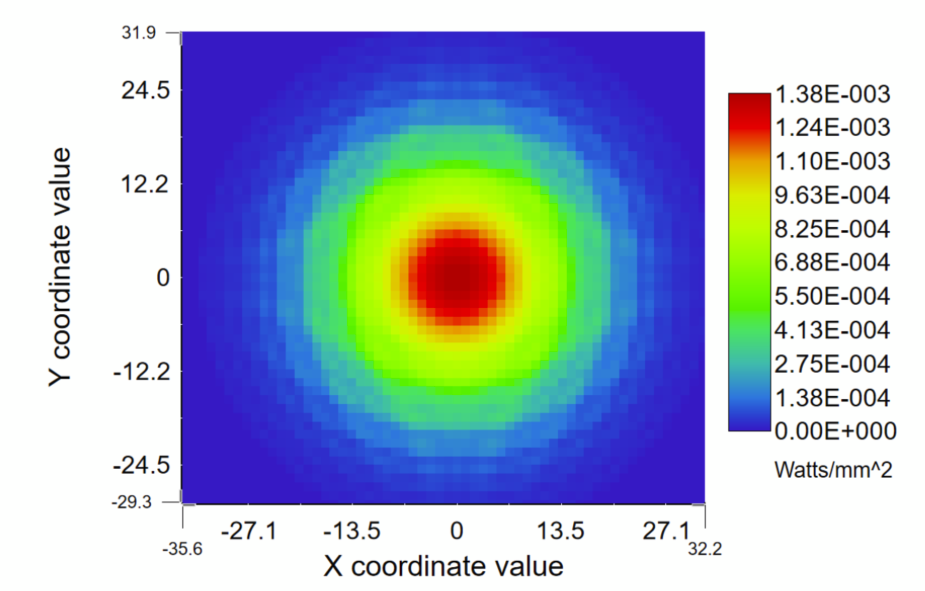
In the IMA plane Surface 31 I get the following graph:
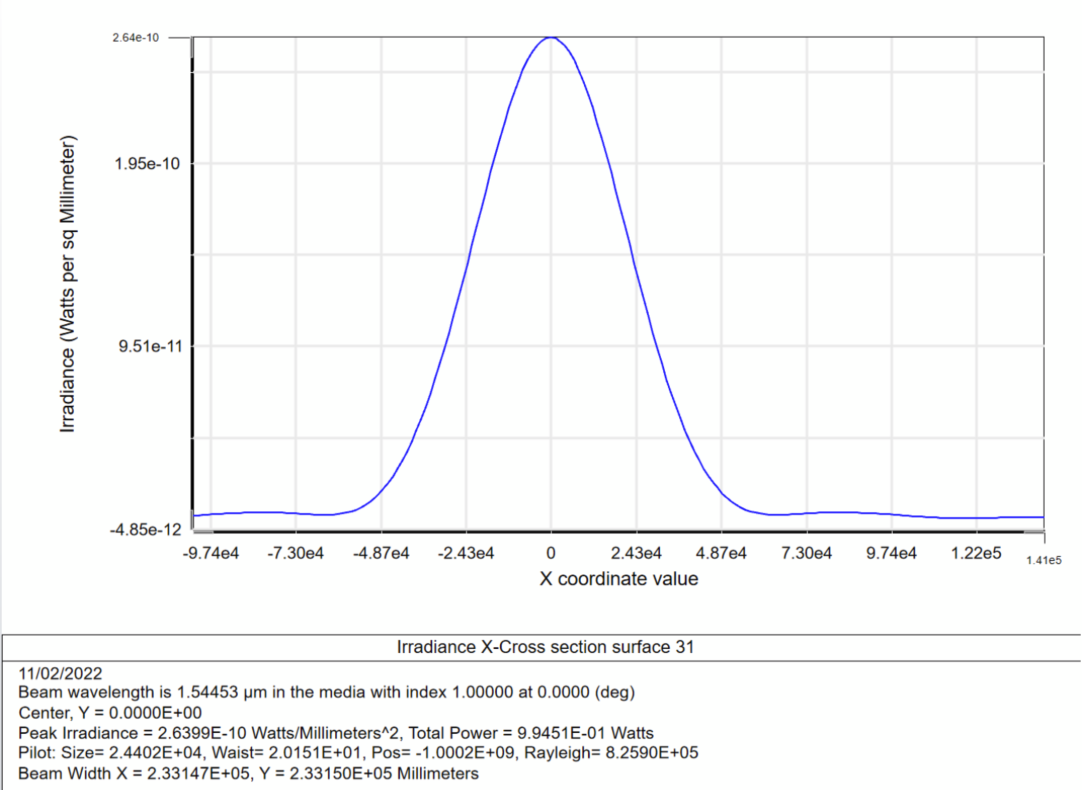
The pilot size (shown on the bottom) is 24.4m (close to the paraxial results and what I would have expected from the divergence). The beam width is shown to be 233m? Not sure what this means. If I look into the cross section graph and estimate the 1/e² point, I get something like 42m beam widths (radius) or 84m (diameter). So I see 3 different values for the beam width 24.4m, 233m, and 42m.
My system contains a couple of flat fold mirrors. I understand from the manual, that tilted flat mirrors are ok for the Paraxial Gaussian Beam Analysis, right? Otherwise the system contains lenses with spherical and even aspheric (4th order) surfaces.
Many thanks for some hints.
Markus


